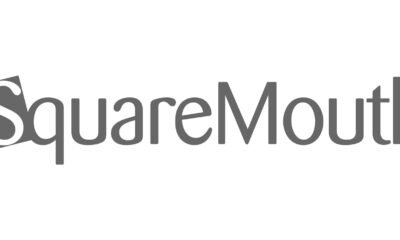AI in Travel
Delta Air Lines Will Use A.I. Personalized Pricing: What Is It?

Recently, Delta Air Lines announced it would expand its use of artificial intelligence to provide individualized prices to customers. This move sparked concern among flyers and politicians. But Delta isn’t the only business interested in using A.I. this way. Personalized pricing has already spread across a range of industries, from finance to online gaming.
Customized pricing — where each customer receives a different price for the same product — is a holy grail for businesses because it boosts profits. With customized pricing, free-spending people pay more while the price-sensitive pay less. Just as clothes can be tailored to each person, custom pricing fits each person’s ability and desire to pay.
I am a professor who teaches business school students how to set prices. My latest book, The Power of Cash: Why Using Paper Money is Good for You and Society, highlights problems with custom pricing. Specifically, I’m worried that A.I. pricing models lack transparency and could unfairly take advantage of financially unsophisticated people.
The history of custom pricing
For much of history, customized pricing was the normal way things happened. In the past, business owners sized up each customer and then bargained face-to-face. The price paid depended on the buyer’s and seller’s bargaining skills — and desperation.
An old joke illustrates this process. Once, a very rich man was riding in his carriage at breakfast time. Hungry, he told his driver to stop at the next restaurant. He went inside, ordered some eggs and asked for the bill. When the owner handed him the check, the rich man was shocked at the price. “Are eggs rare in this neighborhood?” he asked. “No,” the owner said. “Eggs are plentiful, but very rich men are quite rare.”
Custom pricing through bargaining still exists in some industries. For example, car dealerships often negotiate a different price for each vehicle they sell. Economists refer to this as “first-degree” or “perfect” price discrimination, which is “perfect” from the seller’s perspective because it allows them to charge each customer the maximum amount they’re willing to pay.
Currently, most American shoppers don’t bargain but instead see set prices. Many scholars trace the rise of set prices to John Wanamaker’s Philadelphia department store, which opened in 1876. In his store, each item had a nonnegotiable price tag. These set prices made it simpler for customers to shop and became very popular.
Why uniform pricing caught on
Set prices have several advantages for businesses. For one thing, they allow stores to hire low-paid retail workers instead of employees who are experts in negotiation.
Historically, they also made it easier for stores to decide how much to charge. Before the advent of A.I. pricing, many companies determined prices using a “cost-plus” rule. Cost-plus means a business adds a fixed percentage or markup to an item’s cost. The markup is the percentage added to a product’s cost that covers a company’s profits and overhead.
The big-box retailer Costco still uses this rule. It determines prices by adding a roughly 15% maximum markup to each item on the warehouse floor. If something costs Costco $100, they sell it for about $115.
The problem with cost-plus is that it treats all items the same. For example, Costco sells wine in many stores. People buying expensive Champagne typically are willing to pay a much higher markup than customers purchasing inexpensive boxed wine. Using A.I. gets around this problem by letting a computer determine the optimal markup item by item.
What personalized pricing means for shoppers
A.I. needs a lot of data to operate effectively. The shift from cash to electronic payments has enabled businesses to collect what’s been called a “gold mine” of information. For example, Mastercard says its data lets companies “determine optimal pricing strategies.”
So much information is collected when you pay electronically that in 2024 the Federal Trade Commission issued civil subpoenas to Mastercard, JPMorgan Chase and other financial companies demanding to know “how artificial intelligence and other technological tools may allow companies to vary prices using data they collect about individual consumers’ finances and shopping habits.” Experiments at the FTC show that A.I. programs can even collude among themselves to raise prices without human intervention.
To prevent customized pricing, some states have laws requiring retailers to display a single price for each product for sale. Even with these laws, it’s simple to do custom pricing by using targeted digital coupons, which vary each shopper’s discount.
How you can outsmart A.I. pricing
There are ways to get around customized pricing. All depend on denying A.I. programs data on past purchases and knowledge of who you are. First, when shopping in brick-and-mortar stores, use paper money. Yes, good old-fashioned cash is private and leaves no data trail that follows you online.
Second, once online, clear your cache. Your search history and cookies provide algorithms with extensive amounts of information. Many articles say the protective power of clearing your cache is an urban myth. However, this information was based on how airlines used to price tickets. Recent analysis by the FTC shows the newest A.I. algorithms are changing prices based on this cached information.
Third, many computer pricing algorithms look at your location, since location is a good proxy for income. I was once in Botswana and needed to buy a plane ticket. The price on my computer was about $200. Unfortunately, before booking I was called away to dinner. After dinner my computer showed the cost was $1,000 — five times higher. It turned out after dinner I used my university’s VPN, which told the airline I was located in a rich American neighborhood. Before dinner I was located in a poor African town. Shutting off the VPN reduced the price.
Last, often to get a better price in face-to-face negotiations, you need to walk away. To do this online, put something in your basket and then wait before hitting purchase. I recently bought eyeglasses online. As a cash payer, I didn’t have my credit card handy. It took five minutes to find it, and the delay caused the site to offer a large discount to complete the purchase.
The computer revolution has created the ability to create custom products cheaply. The cashless society combined with A.I. is setting us up for customized prices. In a custom-pricing situation, seeing a high price doesn’t mean something is higher quality. Instead, a high price simply means a business views the customer as willing to part with more money.
Using cash more often can help defeat custom pricing. In my view, however, rapid advances in A.I. mean we need to start talking now about how prices are determined, before customized pricing takes over completely.
Jay L. Zagorsky, Associate Professor Questrom School of Business, Boston University
This article is republished from The Conversation under a Creative Commons license. Read the original article.
AI in Travel
Air Travel Pricing: Delta’s AI fare strategy: Cheaper flights or high-tech price hikes?

How it works: AI-powered dynamic pricing
Delta’s AI system, developed by Israeli startup Fetcherr, analyzes a wide range of data in real time such as demand trends, market fluctuations, booking pace, and competitor pricing. Rather than using static fare charts, the AI suggests optimal prices that can adapt instantly to changing conditions.
Delta President Glen Hauenstein called it a “reengineering” of pricing science and noted early trials have led to “amazingly favorable unit revenues,” a metric used to gauge profitability per seat.
Concerns over fairness and transparency
Despite Delta’s optimism, the move has sparked concern among lawmakers and consumer advocates. Senators Mark Warner, Richard Blumenthal, and Ruben Gallego sent a letter to the airline questioning whether AI driven fare decisions could lead to “surveillance pricing.” Their concern: that AI might use personal data to charge individuals based on their perceived willingness to pay.
Delta responds: No personal data used
Delta has firmly denied using personal information to set prices. In a statement, the airline clarified that it does not use browsing history, financial details, or customer profiles. Instead, pricing is based on anonymized market data and traditional travel factors like origin, destination, date, seat class, and refundability. “All customers have access to the same fares,” a Delta spokesperson emphasized.
A broader trend in air travel?
Industry analysts suggest this is just the beginning. As airlines compete for profitability in a volatile market, many are likely to adopt AI tools to gain an edge. While dynamic pricing isn’t new, the speed and granularity offered by AI raises concerns about fairness and transparency.Consumer rights groups are keeping a close eye on the issue. A new bill in Congress, called the Stop AI Price Gouging and Wage Fixing Act, seeks to ban the use of consumer profiling in pricing and could impact how AI tools like these are used in the future.
FAQs
Q1. What is Delta’s AI pricing system?
A1. Delta is using artificial intelligence to set ticket prices based on real-time market data. The system is designed to optimize fares depending on demand, competition, and booking trends.
Q2. How could AI-based pricing affect travelers?
A2. Travelers may see more frequent changes in fares based on demand and timing. It might get harder to know when you’re getting the best deal.
AI in Travel
New York City Launches New AI Travel Guide

Travelers heading to New York City now have one more tool in their arsenal to help them experience the city, an AI chat platform called Libby, short for Liberty.
The new AI tool, available on New York City Tourism + Conventions’ website on the lower right-hand side, along with the city’s official Instagram and WhatsApp, is available in 60 different languages and will provide quick answers to any travel or tourism-related questions about the city.
The responses travelers receive are personalized with extensive data from the tourism organization.
“We’re pleased to unveil Libby, the official AI chat platform for exploring New York City,” says Julie Coker, president and CEO of New York City Tourism + Conventions. “As we gear up for America 250 celebrations and the 2026 FIFA World Cup, we’re proud to offer this free, innovative tool in 60 languages that empowers global visitors to craft unique itineraries and discover unforgettable experiences across all five boroughs.”
New York City will also promote Libby at 4,000+ LinkNYC screens at transit stops. Libby was created in partnership with GuideGeek AI technology from Matador Network.
For the latest travel news, updates and deals, subscribe to the daily TravelPulse newsletter.
Topics From This Article to Explore
AI in Travel
The Case for Makefiles in Python Projects (And How to Get Started)

 Image by Author | Ideogram
Image by Author | Ideogram# Introduction
Picture this: you’re working on a Python project, and every time you want to run tests, you type python3 -m pytest tests/ --verbose --cov=src. When you want to format your code, it’s black . && isort .. For linting, you run flake8 src tests. Before you know it, you’re juggling a dozen different commands, and your teammates are doing the same thing slightly differently, too.
This is where Makefiles come in handy. Originally used for C and C++ projects, Makefiles can be super useful in Python development as a simple way to standardize and automate common tasks. Think of a Makefile as a single place where you define shortcuts for all the things you do repeatedly.
# Why Use Makefiles in Python Projects?
Consistency Across Your Team
When everyone on your team runs make test instead of remembering the exact pytest command with all its flags, you eliminate the “works on my machine” problem. New team members can jump in and immediately know how to run tests, format code, or deploy the application.
Documentation That Actually Works
Unlike README files that get outdated, Makefiles serve as useful documentation. When someone runs make help, they see exactly what tasks are available and how to use them.
Simplified Complex Workflows
Some tasks require multiple steps. Maybe you need to install dependencies, run migrations, seed test data, and then start your development server. With a Makefile, this becomes a single make dev command.
# Getting Started with Your First Python Makefile
Let’s build a practical Makefile step by step. Create a file named Makefile (no extension) in your project root.
// Basic Structure and Help Command
This code creates an automatic help system for your Makefile that displays all available commands with their descriptions:
.PHONY: help
help: ## Show this help message
@echo "Available commands:"
@grep -E '^[a-zA-Z_-]+:.*?## .*$$' $(MAKEFILE_LIST) | sort | awk 'BEGIN {FS = ":.*?## "}; {printf " \033[36m%-15s\033[0m %s\n", $$1, $$2}'
.DEFAULT_GOAL := help
The .PHONY: help tells Make that “help” isn’t a real file but a command to run. When you type make help, it first prints “Available commands:” then uses a combination of grep and awk to scan through the Makefile itself, find all lines that have command names followed by ## description, and format them into a nice readable list with command names and their explanations.
// Environment Setup
This code creates three environment management commands:
.PHONY: install
install: ## Install dependencies
pip install -r requirements.txt
pip install -r requirements-dev.txt
.PHONY: venv
venv: ## Create virtual environment
python3 -m venv venv
@echo "Activate with: source venv/bin/activate"
.PHONY: clean
clean: ## Clean up cache files and build artifacts
find . -type f -name "*.pyc" -delete
find . -type d -name "__pycache__" -delete
find . -type d -name "*.egg-info" -exec rm -rf {} +
rm -rf build/ dist/ .coverage htmlcov/ .pytest_cache/
The install command runs pip twice to install both main dependencies and development tools from requirements files. The venv command creates a new Python virtual environment folder called “venv” and prints instructions on how to activate it.
The clean command removes all the messy files Python creates during development. It deletes compiled Python files (.pyc), cache folders (pycache), package info directories, and build artifacts like coverage reports and test caches.
// Code Quality and Testing
This creates code quality commands:
.PHONY: format
format: ## Format code with black and isort
black .
isort .
.PHONY: lint
lint: ## Run linting checks
flake8 src tests
black --check .
isort --check-only .
.PHONY: test
test: ## Run tests
python -m pytest tests/ --verbose
.PHONY: test-cov
test-cov: ## Run tests with coverage
python -m pytest tests/ --verbose --cov=src --cov-report=html --cov-report=term
.PHONY: check
check: lint test ## Run all checks (lint + test)
The format command automatically fixes your code style using black for formatting and isort for import organization.
The lint command checks if your code follows style rules without changing anything. flake8 finds style violations, while black and isort run in check-only mode to see if formatting is needed.
The test command runs the test suite. test-cov runs tests and also measures code coverage and generates reports. The check command runs both linting and testing together by depending on the lint and test commands.
// Development Workflow
This creates development workflow commands:
.PHONY: dev
dev: install ## Set up development environment
@echo "Development environment ready!"
@echo "Run 'make serve' to start the development server"
.PHONY: serve
serve: ## Start development server
python3 -m flask run --debug
.PHONY: shell
shell: ## Start Python shell with app context
python3 -c "from src.app import create_app; app=create_app(); app.app_context().push(); import IPython; IPython.start_ipython()"
The dev command first runs the install command to set up dependencies, then prints success messages with next steps. The serve command starts a Flask development server in debug mode.
The shell command launches an IPython shell that’s already connected to your Flask app context, so you can test database queries and app functions interactively without manually importing everything.
# More Makefile Techniques
// Using Variables
You can define variables to avoid repetition:
PYTHON := python3
TEST_PATH := tests/
SRC_PATH := src/
.PHONY: test
test: ## Run tests
$(PYTHON) -m pytest $(TEST_PATH) --verbose
// Conditional Commands
Sometimes you want different behavior based on the environment:
.PHONY: deploy
deploy: ## Deploy application
ifeq ($(ENV),production)
@echo "Deploying to production..."
# Production deployment commands
else
@echo "Deploying to staging..."
# Staging deployment commands
endif
// File Dependencies
You can make targets depend on files, so they only run when needed:
requirements.txt: pyproject.toml
pip-compile pyproject.toml
.PHONY: sync-deps
sync-deps: requirements.txt ## Sync dependencies
pip-sync requirements.txt
🔗 Here’s an example of a complete Makefile for a Flask web application.
# Best Practices and Tips
Here are some best practices to follow when writing Makefiles:
- Don’t overcomplicate your Makefile. If a task is getting complex, consider moving the logic to a separate script and calling it from Make.
- Choose command names that clearly indicate what they do. make test is better than make t, and make dev-setup is clearer than make setup.
- For commands that don’t create files, always declare them as .PHONY. This prevents issues if someone creates a file with the same name as your command.
- Organize your Makefiles to group related functionality together.
- Make sure all your commands work from a fresh clone of your repository. Nothing frustrates new contributors like a broken setup process.
# Conclusion
Makefiles might seem like an old-school tool, but they’re effective for Python projects. They provide a consistent interface for common tasks and help new contributors get productive quickly.
Create a basic Makefile with just install, test, and help commands. As your project grows and your workflow becomes more complex, you can add more targets and dependencies as needed.
Remember, the goal isn’t to create the most clever or complex Makefile possible. It’s to make your daily development tasks easier and more reliable. Keep it simple, keep it useful, and let your Makefile become the command center that brings order to your Python project chaos.
Bala Priya C is a developer and technical writer from India. She likes working at the intersection of math, programming, data science, and content creation. Her areas of interest and expertise include DevOps, data science, and natural language processing. She enjoys reading, writing, coding, and coffee! Currently, she’s working on learning and sharing her knowledge with the developer community by authoring tutorials, how-to guides, opinion pieces, and more. Bala also creates engaging resource overviews and coding tutorials.
-

 Brand Stories2 weeks ago
Brand Stories2 weeks agoBloom Hotels: A Modern Vision of Hospitality Redefining Travel
-

 Brand Stories2 weeks ago
Brand Stories2 weeks agoCheQin.ai sets a new standard for hotel booking with its AI capabilities: empowering travellers to bargain, choose the best, and book with clarity.
-

 Destinations & Things To Do2 weeks ago
Destinations & Things To Do2 weeks agoUntouched Destinations: Stunning Hidden Gems You Must Visit
-

 Destinations & Things To Do1 week ago
Destinations & Things To Do1 week agoThis Hidden Beach in India Glows at Night-But Only in One Secret Season
-

 AI in Travel2 weeks ago
AI in Travel2 weeks agoAI Travel Revolution: Must-Have Guide to the Best Experience
-

 Brand Stories1 month ago
Brand Stories1 month agoVoice AI Startup ElevenLabs Plans to Add Hubs Around the World
-

 Brand Stories4 weeks ago
Brand Stories4 weeks agoHow Elon Musk’s rogue Grok chatbot became a cautionary AI tale
-

 Brand Stories2 weeks ago
Brand Stories2 weeks agoContactless Hospitality: Why Remote Management Technology Is Key to Seamless Guest Experiences
-

 Asia Travel Pulse1 month ago
Asia Travel Pulse1 month agoLooking For Adventure In Asia? Here Are 7 Epic Destinations You Need To Experience At Least Once – Zee News
-

 AI in Travel1 month ago
AI in Travel1 month ago‘Will AI take my job?’ A trip to a Beijing fortune-telling bar to see what lies ahead | China











You must be logged in to post a comment Login